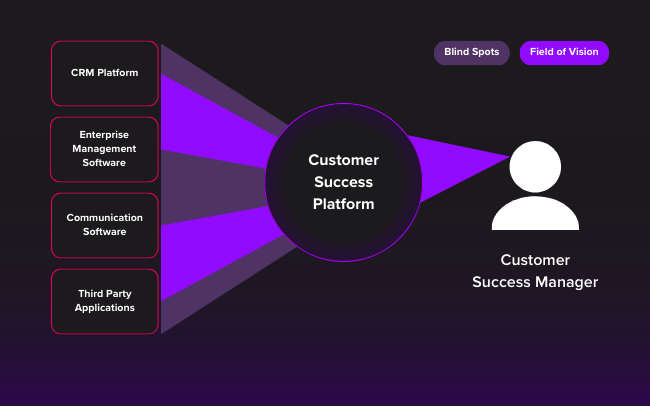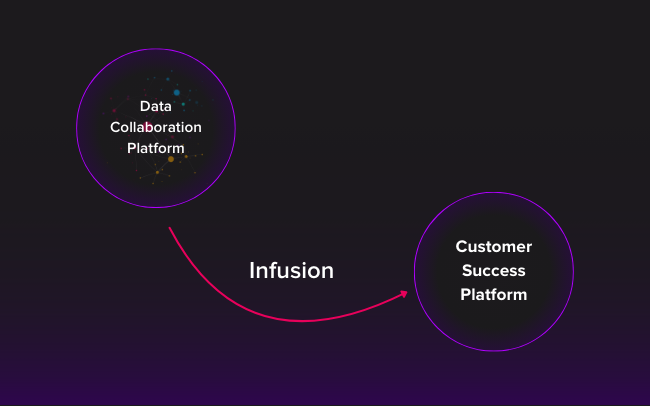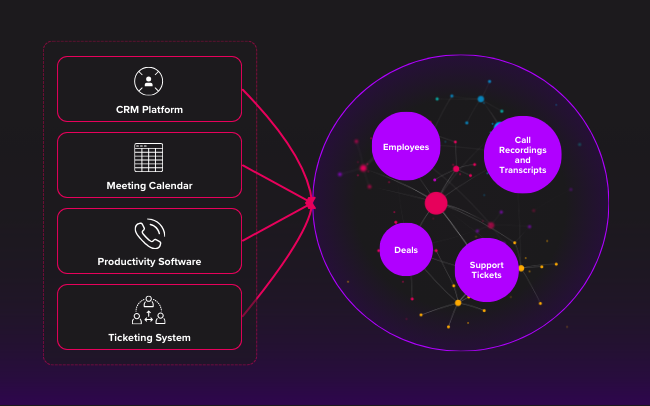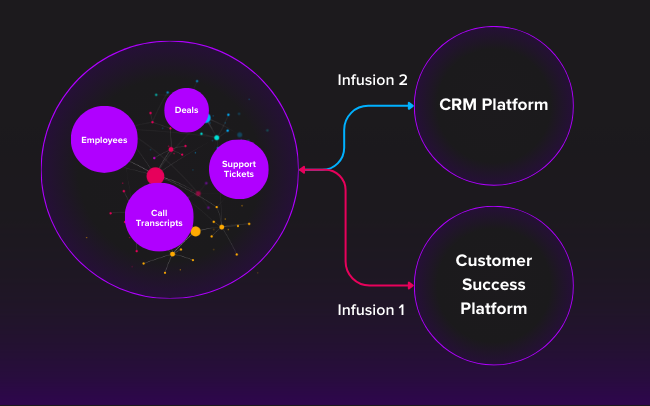Jordan, a Customer Success Manager (CSM) at a bustling SaaS company, is facing an uphill battle. Despite Jordan’s efforts to anticipate customer needs and mitigate risks, client churn is ticking upwards. With disparate systems housing fragments of customer data, Jordan's full picture of each account feels more like a puzzle with missing pieces than a clear roadmap to success.
The challenge faced by Customer Success teams is not unique to Jordan’s experience. Many organizations find that despite having access to various powerful platforms for managing customer relationships, the incomplete integration of customer data across systems leads to significant blind spots.
This limitation doesn't stem from any lack in the CSM efforts or the capabilities of their platforms but from an environment where essential insights are locked within separate systems. As a result, developing effective retention strategies is challenging when vital pieces of the customer journey remain out of sight.
To overcome the challenge of enhancing customer retention, adopting a strategy focused on collaborative intelligence can significantly enhance how Customer Success Managers understand and interact with their portfolios.
The collaborative intelligence approach reconsiders how customer data is utilized, moving away from direct and often cumbersome integrations towards a seamless flow of interconnected information.
Let’s take a look at the key components of this solution:
Initiate a Data Infusion
A data infusion establishes a connection between a data collaboration platform like Cinchy and a customer success platform like Gainsight. Unlike straightforward field mapping, infusion processes the collective information to uncover hidden patterns – for instance, anticipating customer sentiments or evaluating renewal probabilities.
This means CSMs can access an enhanced version of their Customer Success Platform brimming with new "smarts" - insightful analytics readily available at their fingertips, predicting trends and guiding decision-making without them needing to navigate away from their familiar interface.
Liberate Data Sources
With the infusion component completed, you can then liberate your data sources of choice, which in turn are intelligently filtered and injected into the customer success platform, enriching it with broader insights.
In essence, data liberation entails synchronizing customer details from various systems – such as Salesforce and Microsoft Teams – into a common data model without requiring each to be directly connected to a customer success platform like Gainsight. This not only reduces the complexity but also significantly cuts down on time and resources otherwise spent in attempting traditional point-to-point integration that may still leave critical data silos intact.
Harness Existing Liberations for Future Infusions
This optimized flow enables CSMs to effectively identify risks and opportunities, leveraging a fuller, dynamically updated view of each account's health. As a result, blind spots are significantly reduced, making way for targeted interventions tailored to individual client needs.
Notably, this approach doesn’t just stop at improving customer success metrics; it creates a foundation for systemic transformation across the organization. The subsequent projects might involve liberating other business unit data and infusing enhanced intelligence across additional platforms, like using liberated data from Gainsight for driving sales initiatives within Salesforce.
This exhibits the scalable advantage of collaboration intelligence where initial steps in customer retention can pave the way for comprehensive organizational benefits.
By adopting this approach – starting with customer success and progressively widening scope – businesses can transform their relationship with data, shifting from static integration to dynamic collaborative intelligence.
Such a paradigm ensures that the systems not only communicate more efficiently but also augment each other’s capabilities, fostering an environment where the sum is truly greater than its parts.
***
The example video demonstrates how CI for Customer Success sends an alert triggered by LinkedIn activities when there are new C-level executive postings at a customer's organization.
This is crucial because it could indicate a change in the executive team, such as a C-level executive being fired or resigning. Recognizing these changes is vital as it introduces a new stakeholder with whom the organization must establish a connection.
The alert trigger ensures customer success teams are promptly informed and can react quickly to engage with the new key personnel.
***





